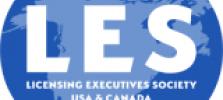Novel Methods for Generating Retinal Pigment Epithelium Cells from Induced Pluripotent Stem Cells
The retinal pigment epithelial cells (RPE) make up a polarized monolayer in the vertebrate eye that separates the neural retina from the choroid, and performs a crucial role in retinal physiology by forming a blood-retinal barrier and closely interacting with photoreceptors to maintain visual function. Many ophthalmic diseases, such as age-related macular degeneration, are associated with a degeneration or deterioration of the RPE.

